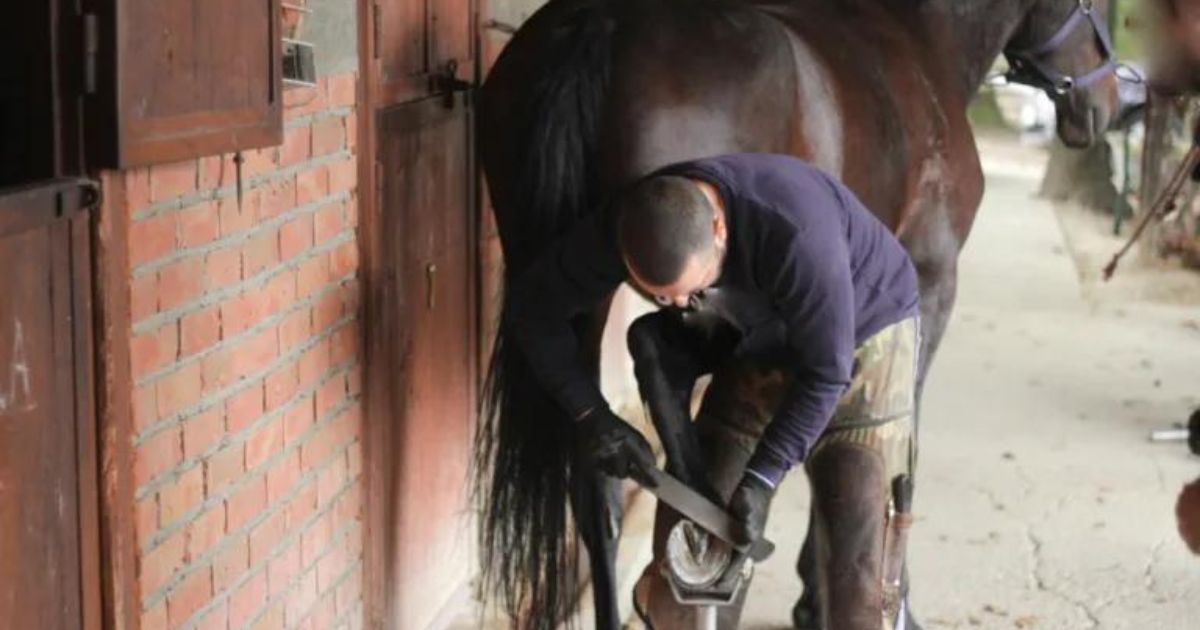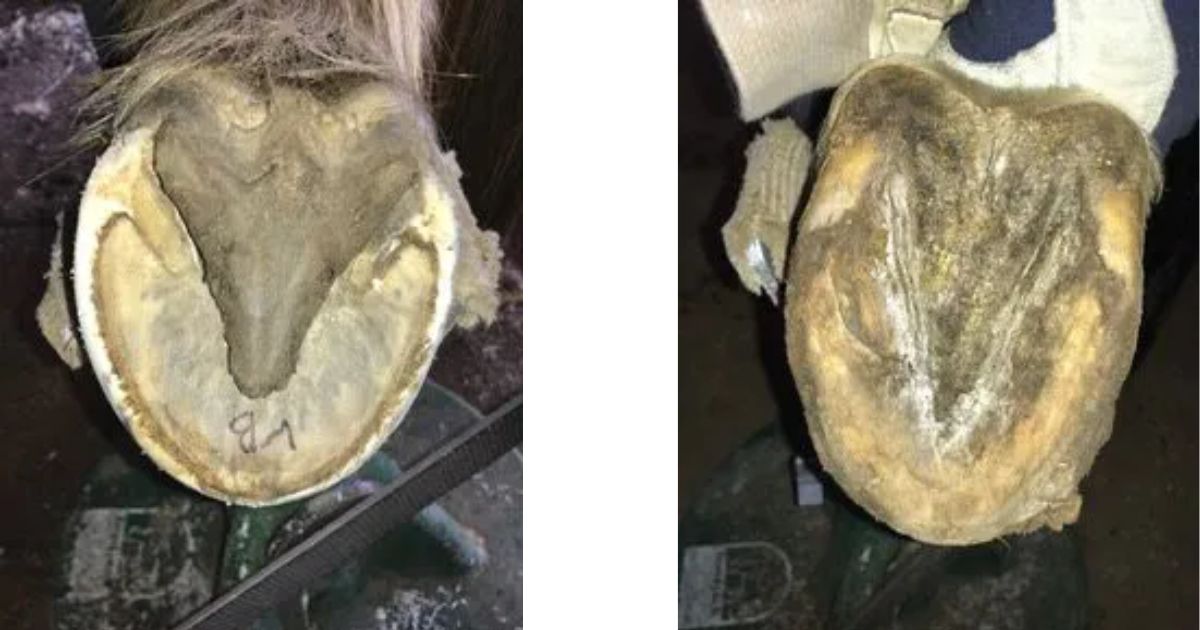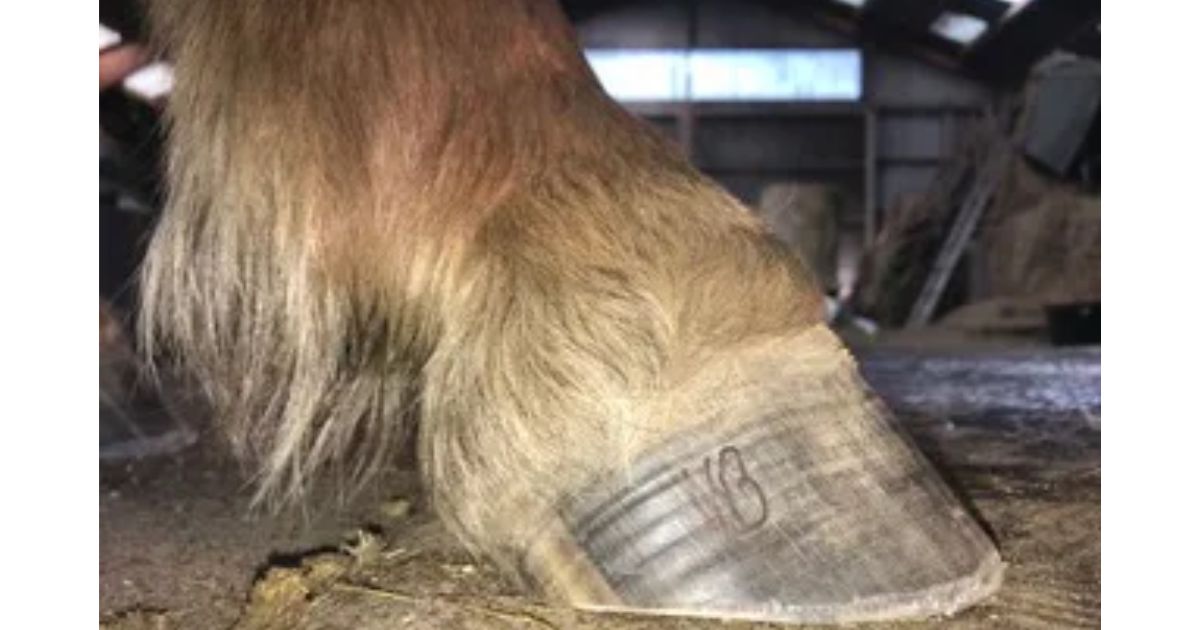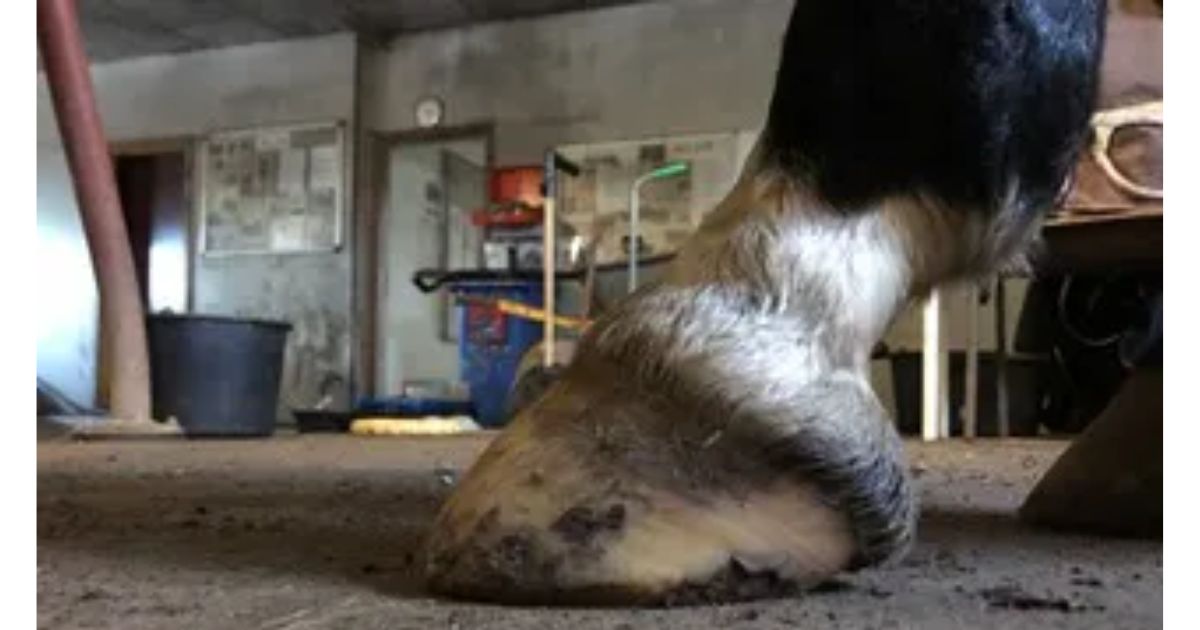Menu

Why is it that we automatically contact a farrier when a horse's hooves need attention, and is there an alternative? There's nothing wrong in contacting a farrier, but hoof trimmer Mette Skovmand wishes that as horse owners, we would be more curious about whether there could be other approaches to horse hoof care. Not because there's anything wrong with using a farrier, but because she believes it's important to consider if there might be other ways to do things – such as hoof trimming.
Read also: Why you should let your horse graze in the pasture
Mette Skovmand runs Nature's Trim and Nature's Hoof Help, where she travels around Northern Jutland trimming horses and selling products for treating thrush. She has been trimming horses – both her own and others – for five years. She lives in Jerslev, where her horses Jake and Baldur are kept on a paddock paradise, and she trims their hooves herself. Jake is an 11-year-old Irish Cob and Baldur is a 4-year-old Icelandic horse. Mette was introduced to hoof trimming when hoof trimmer Søsser Lund came to trim horses at the stable where Mette kept Jake at the time, and gradually Mette came under Søsser’s wing. After over 70 hours of instruction, sparring, and theory, Mette now has hoof trimming as a side job alongside her full-time job.
It's important to stress that one method is not more correct than the other. For Mette, hoof trimming is largely about fostering curiosity in horse owners and providing them with new knowledge.
"I visit many different stables, where I often find that we forget to question things, and I just want to challenge that mindset a bit. It’s not about whether to choose a farrier or a hoof trimmer; as a horse owner, you should follow the path that makes sense for you. My wish is simply for us to have a more open dialogue about horse hooves, recognizing that we each have our strengths," explains Mette.
But what exactly is a hoof trimmer good at that differs from a farrier?
In many ways, the differences are not so big. Both aim to provide the horse with the best conditions for functioning as the owner wishes. The starting point is healthy and sound hooves, but the approach and the end result are different.
"The biggest difference between a farrier and a trimmer might be that all the training we get as trimmers is focused on getting the horse to function optimally barefoot. This includes feeding, movement, and trimming," explains Mette.
A hoof trimmer also looks at the horse's vitamin and mineral balance and sugar intake, as these factors affect the hooves and the horse's movement.
Read also: When the horse "Catwalks": How to spot and remedy the problem
"You could say that a hoof trimmer probably has a more holistic and comprehensive view of the horse's hooves when creating a barefoot horse," says Mette.
It is far from suitable for all horses – or horse owners – to choose a trimmer, and whether you choose one or the other, the most important thing is to observe your horse and listen to it. If something isn't working, it's crucial that we, as horse owners, critically and curiously consider whether we could do things differently.

As a hoof trimmer, one focuses a lot on how the horse places its hooves when walking. The most important thing – whether the horse is shod or not – is that it lands heel first (Dr. Robert Bowker), explains Mette.
"Heel landing is important because that's where all the soft parts are, and that's where the shock absorption is. So if the horse doesn't land heel first, it lands toe first. In the toe sits the coffin bone, meaning the horse is loading the coffin bone with many kilograms. This can damage tendons, joints, and of course the coffin bone."
Most farriers and hoof trimmers would probably agree that as horse owners, we should do everything we can to protect the horse's hooves, joints, and tendons, but the approach to how we do this is not quite the same.
If you have chosen to have a barefoot horse, it's important to understand that it's not something the horse can become overnight. It often requires a lot of work for both the hoof trimmer and the horse owner when the hoof is trimmed so that the horse can walk barefoot without pain. Therefore, Mette also makes a point of talking about the work before she starts trimming horses.
"As hoof trimmers, we don't just look at the hoof. We look at the whole horse, and we especially look at the feeding of the horse, focusing on whether the horse gets the vitamins and minerals it actually needs. If the horse lacks essential vitamins and minerals like zinc, copper, and selenium, we can't help the horse to create a good hoof – because it's not us who make it. It's the horse itself that has to create a good barefoot hoof, and then we can support it. We just provide the conditions for it, but a good barefoot horse cannot be achieved unless the horse has the necessary building blocks for it."
Therefore, as a horse owner, you must be prepared to look at much more than the hooves if you're considering a barefoot horse, and this can deter many. It can take years to have a well-functioning barefoot horse, and you must be ready to make some adjustments in the way you keep horses, explains Mette.

"You have to be prepared that you can't continue in the same way if you want a barefoot horse. You will likely be introduced to a lot of new knowledge, but that knowledge also means you can react faster if something is wrong with the horse's hooves."
The transition from a shod horse to a barefoot horse cannot and should not be done overnight, and it likely takes 1-2 hoof growth cycles before the horse can function as a barefoot horse. This generally takes between 9-12 months, during which time the horse's hoof should be allowed to work and shape itself towards a natural hoof, and here it's obviously important that the horse does not suffer pain.
"As trimmers, we also tend to stay away from the horse's sole. We want as much protection as possible against stones and the like. If you start to tamper too much with it, it's a bit like peeling the skin off a blister – you simply expose immature tissue that is not resistant to stones, gravel, and the like, and then the horse becomes tender and walks with a stinging gait. Therefore, it's important that we do everything we can to ensure that the horse itself creates some good and durable soles, which can withstand the surface the horse walks on."

This development can also be supported by ensuring that the horse gets enough movement throughout the day, minimal intake of starch and sugar, and that it gets the minerals and vitamins so important for building a solid hoof.
During the hoof growth, many trimmers will also use boots or a glue-on shoe if the horse is tender-footed. This is a gentle method where the horse retains its flexibility in the hoof, which is very important for the horse to move correctly.
"As I see it, it's largely about trying to give the horse a more natural movement pattern, where it uses its body in the way it was created," says Mette.
Read also: English, hanoverian, combined or cross noseband?
You're probably used to the horse needing a farrier about every 8-12 weeks, but here a trimmer will typically come more often.
"If we are to help the horse get the natural hoof, we need to come regularly and maybe just take three strokes with the hoof file, rather than letting the horse's hooves grow out to an extreme position (Dr. Robert Bowker). As a hoof trimmer, it's actually not an advantage to have a lot of hoof to remove. If just the hoof grows 1 cm too long, it will strain the tendons by 50 kilos, and therefore we would like to see the horse about every four weeks. The interval depends on whether the horse owner is willing to also try their hand with a hoof file in between," tells Mette.
As the vitamin and mineral balance is also a big part of hoof trimming, it's also important that the horse owner is aware of this. Furthermore, one should be very mindful of the horse's grass intake, as the sugar content can be high, and this can pose challenges in relation to the natural hoof, and it can form the basis for laminitis – whether the horse is shod or not.
Thus, there is no right or wrong answer as to whether a farrier is better than a hoof trimmer, or vice versa. There is a lot of work involved if you want to try having a barefoot horse, but if it works, there shouldn't be other considerations than when you have a shod horse that has been trimmed by a farrier.
"A hoof trimmer demands something of a horse owner, and one must be prepared for that. It's not necessarily for everyone, and that's fine. My wish is just that we remain curious about each other and the information we receive, and that we all do what we believe is best for our horse. There's no doubt that caring for a horse's hooves is a craft, no matter what we choose, and we all want to have a healthy and sound horse."
Read also: Trainer: How to achieve the optimal and forward-Moving walk
Source:
Dr. Robert Bowker: Equine Science Academy.